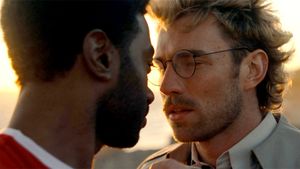(CNN) — Unions just had one of the best years in terms of growing membership so far this century. But the high-profile organizing wins at Starbucks, Amazon and Apple stores are only a small part of that success.
A boom in hiring by a number of already unionized employers drove an increase of 200,000, or 1.3 percent, union-represented workers, to a total of 16 million. That was the biggest gain since 2015, according to statistics released Thursday by the Labor Department.
There was an even larger jump in the number of workers who are dues-paying union members — an additional 273,000. That represented the biggest rise since 2008, bringing that total to 14.3 million. (Some workers at unionized workplaces choose not to belong to the union, accounting for the different totals.)
"There has been an uptick in organizing. But that's not enough to explain a lot of the change," said Alexander Colvin, dean of Cornell University's School of Industrial and Labor Relations. "A lot of the increase was the return of jobs lost in the pandemic in key unionized industries."
Still, union members made up only 10.1 percent of workers overall last year, a nudge down from 10.3 percent in 2021. Back in 1983, when the Labor Department started tracking the numbers, that percentage was about 20 percent.
But there's no denying 2022 was a very good year for union organizing.
A CNN analysis of statistics kept by the National Labor Relations Board, which oversees representation votes at most businesses, shows unions won elections at 995 businesses last year for which results have been certified by the board. That was nearly double the 575 wins of the previous year.
But those newly unionized workplaces had a total of 50,256 workers eligible to vote in those elections. While that's up significantly from the 25,821 workers at the businesses where unions won votes in 2021, it wasn't enough to move the needle by itself.
A significant number of those successes came at Starbucks locations, where the NLRB certified pro-union votes at 261 stores. Those stores had 6,656 workers among them, an average of just more than 25 per store.
The two largest union votes of 2022 — by graduate teaching assistants at the Massachusetts Institute of Technology and Boston University — resulted in 7,000 new union-represented workers.
"What's significant about the organizing campaigns at Starbucks and Amazon isn't that they produced big numbers, but the potential they have for larger numbers in the future," said Colvin.
The attention that each company's campaign is getting is important for generating "momentum" for union organizing activity.
The biggest gains came from the addition of 102,000 new union-represented workers in the fields of leisure and hospitality.
While 19,000 of those new unionized jobs were at restaurants and bars (helped, in part, by the Starbucks campaign) a much bigger gain of 62,000 jobs came from businesses in the fields of arts, entertainment and recreation. These were mostly at theaters and sports venues that struggled with limited capacity and lower employment during much of 2021 but were back in business in 2022.
The other unionized jobs added in the leisure and hospitality sector were in hotels and other accommodations, as travel rebounded strongly during the year.
Manufacturing of durable goods like cars, planes and appliances added 76,000 union-represented jobs, and transportation and warehousing added 46,000 more. Most of the transportation jobs are likely in the heavily unionized US passenger airline industry.
"The strong hiring numbers are there because of past organizing efforts in those fields," said Todd Vachon, a labor studies professor at Rutgers University. "It's important to have a union, so when workers come back, they come back to good jobs."
Nearly half of unionized workers nationwide are employed by different levels of local, state or federal government, rather than businesses, even though the private sector employs nearly six workers for every government worker.
Overall the public sector lost a combined 12,000 unionized jobs last year due to declines in unionized jobs at the federal and local government levels.
But state governments added 99,000 unionized jobs during the year, most likely at state colleges and universities, Colvin said, which account for nearly half of state employment overall.
"People think of university jobs being faculty, but there's a lot of other employees at schools — staffing for dining halls and residence halls, and the campus grounds," he said. "Many schools that operated with remote learning in 2021 reopened their campuses in 2022. Many states also found their budgets flush enough to add employees elsewhere in state government," he said.
Still, even with those significant bumps in membership, the percentage of workers who are union members fell, because there were even more gains in nonunion jobs.
US employers added the second most jobs on record in 2022, trailing only the bounce-back in jobs that occurred as the economy emerged from the pandemic in 2021.
The-CNN-Wire
™ & © 2023 Cable News Network, Inc., a Warner Bros. Discovery Company. All rights reserved.


















































